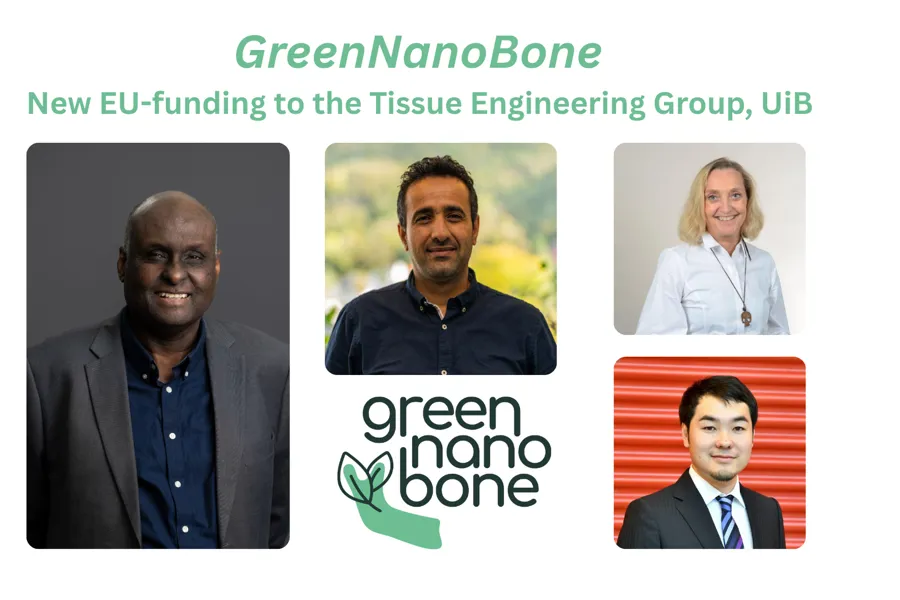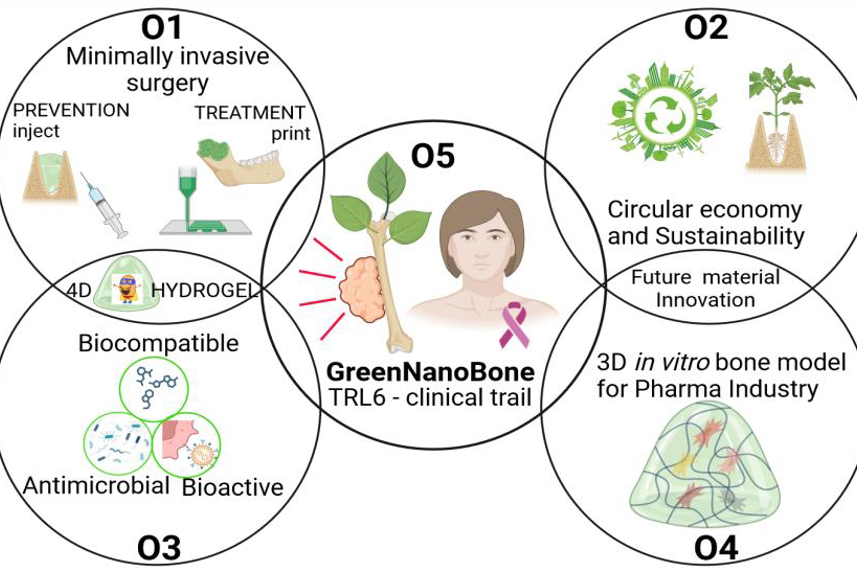EU HORIZON grant for the GreenNanoBone project
Bergen researchers join €8.6M EU project to combat jaw disease with green biomaterials
June 2025 marks the start of GreenNanoBone, a €8.6 million EU-funded research initiative aimed at transforming the treatment of medication-related osteonecrosis of the jaw (MRONJ). Researchers at the Tissue Engineering Group at the University of Bergen are key partners to this ambitious project, coordinated by the University of Liverpool.

Advancing Sustainable Care for MRONJ
Medication-related osteonecrosis of the jaw (MRONJ) is a painful and therapy-resistant condition, characterized by non-healing exposed bone in the jaw. With few treatment options currently available, it presents a significant challenge in oncology care.
A new EU-funded project, GreenNanoBone, is set to tackle this challenge by bringing together a multidisciplinary consortium to develop a new class of sustainable biomaterial made of plant-derived, AI-optimized 4D hydrogels. These biomaterials, made from food industry byproducts, are biocompatible, antimicrobial, and can be injected or 3D-printed directly into the affected area of the jaw. This allows for a precise and minimally invasive treatment of the damaged tissue.

The project is funded under the HORIZON-CL4-2024_RESILIENCE cluster for four years. The biomaterials will undergo preclinical testing to ensure that the materials meet medical standards. Future goals include preparing for a Phase I clinical trial and exploring broader applications in osteoporosis and complex fractures.
Bergen-based experise in regenerative therapies
The Tissue Engineering Group at the University of Bergen (UiB) plays an important role as a work package leader, contributing with substantial expertise in regenerative therapies and biomaterials. Their ongoing work at the Mohn Research Centre for Regenerative Medicine, "Clinical use of mesenchymal stem cells (MSCs) for osteonecrosis", is directly linked to the GreenNanoBone project.
“Our previous success in securing Trond Mohn Research Foundation funding for MSC-based osteonecrosis treatment has been crucial in building the expertise we now bring to GreenNanoBone,” says Professor Kamal Mustafa, UiB’s work package leader.
In addition to Professor Kamal Mustafa, the UiB team includes senior researcher Niyaz Al-Sharabi, associate professor Cecilie Gjerde and postdoctoral fellow Shuntaro Yamada.
GreenNanoBone represents a major step forward in combining therapeutic innovation with environmental responsibility, offering hope for patients and advancing the shift toward greener medical technologies.